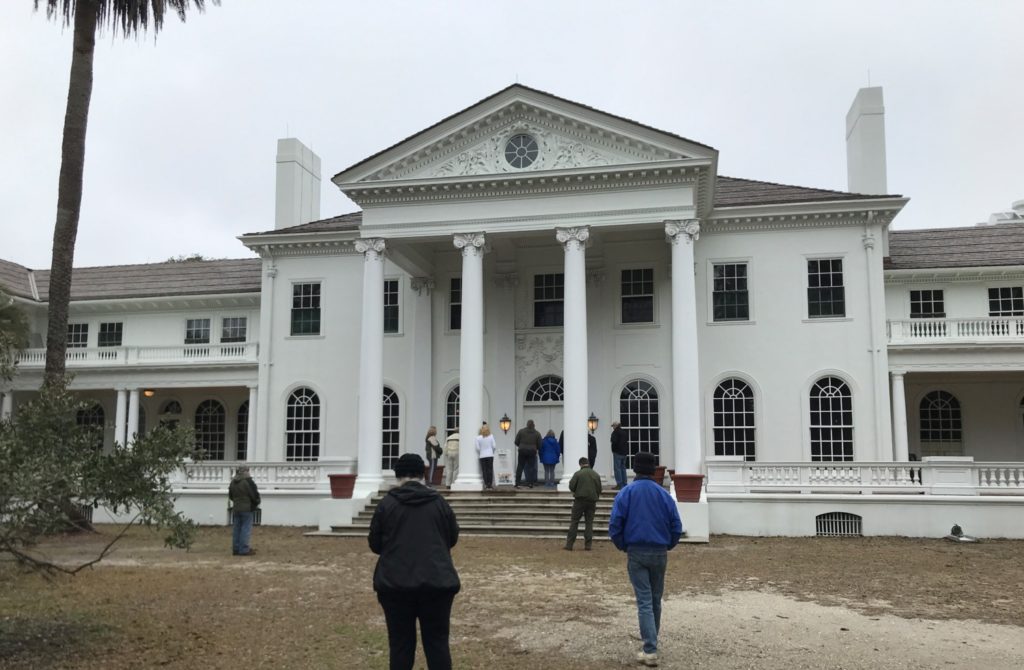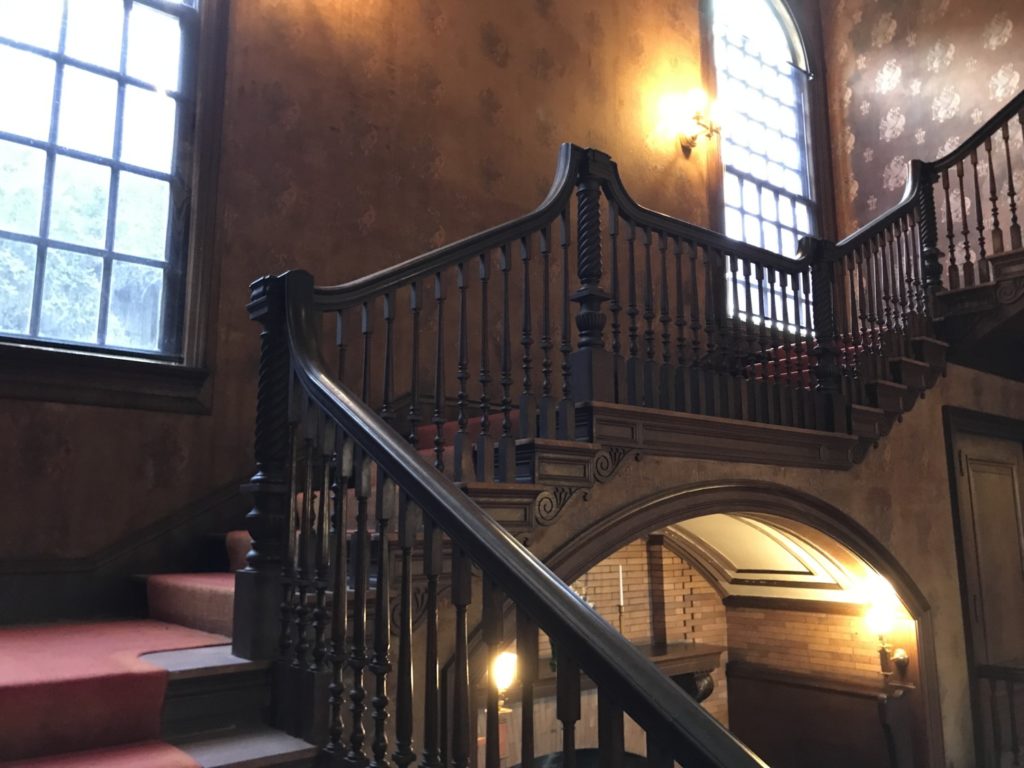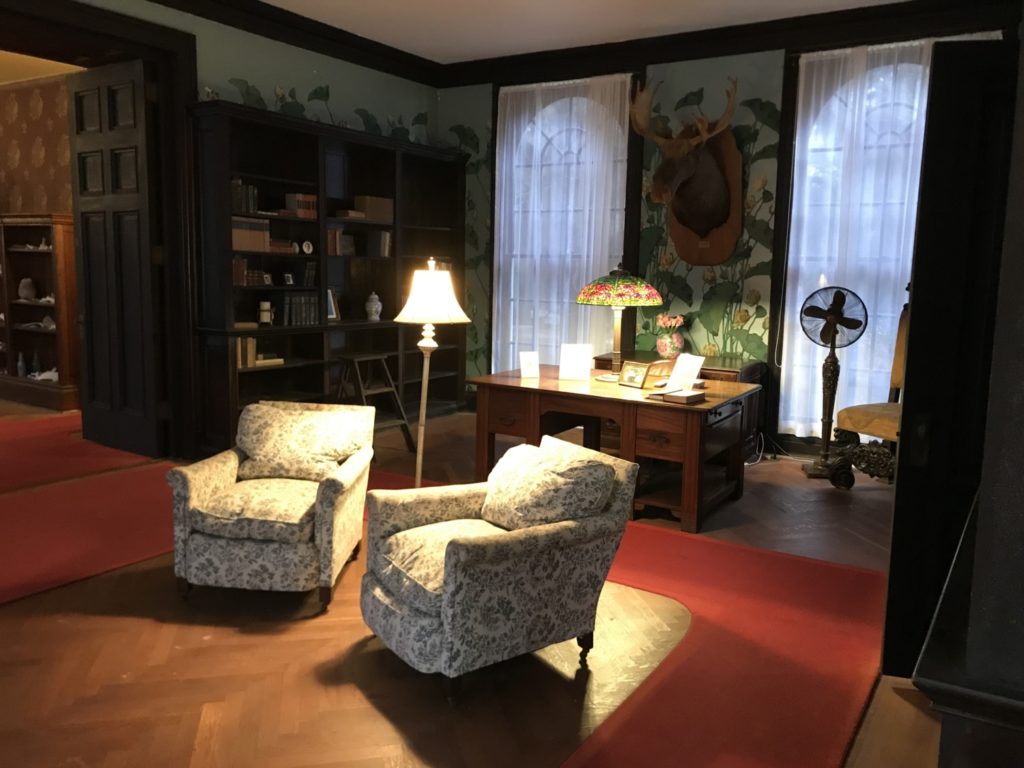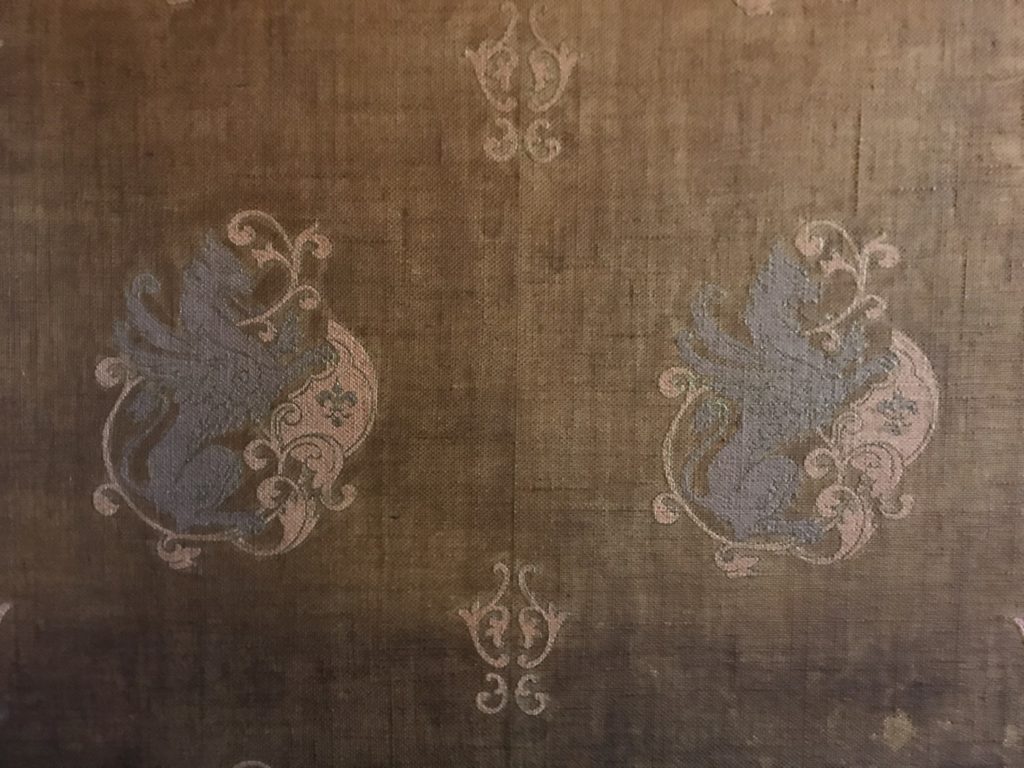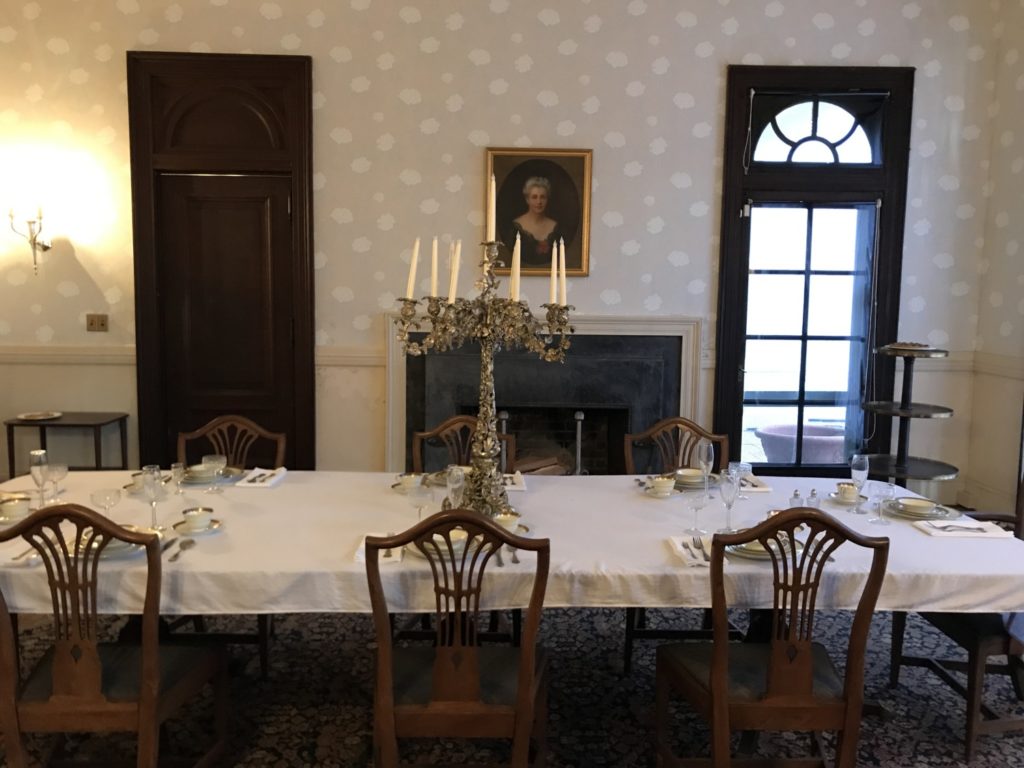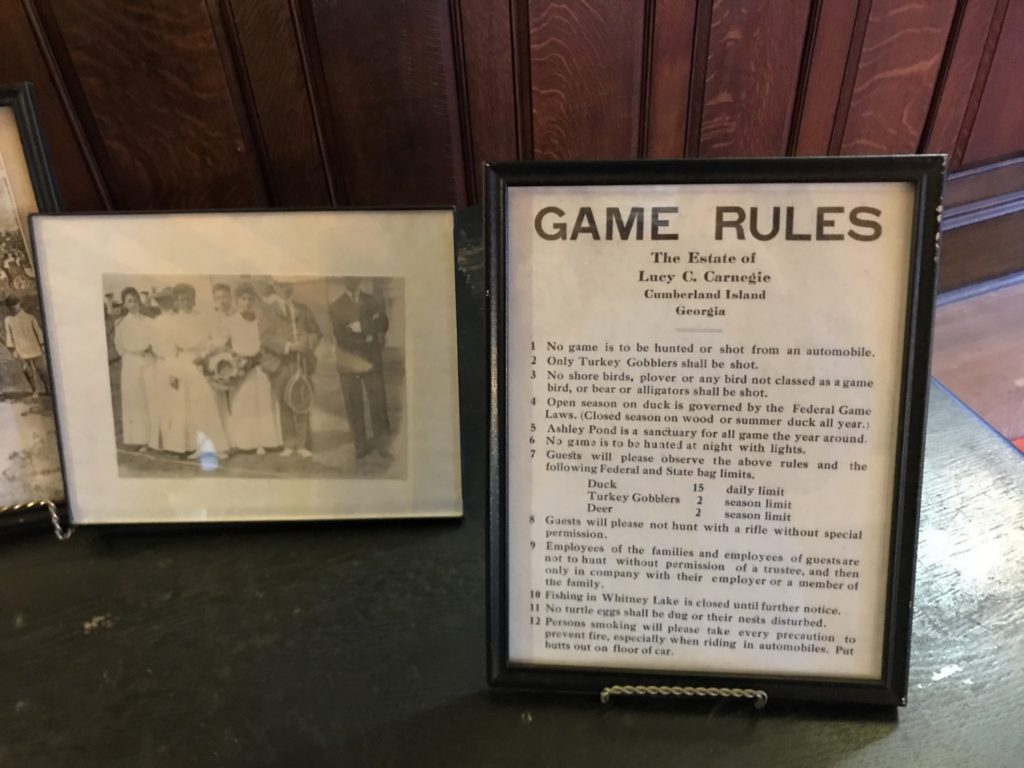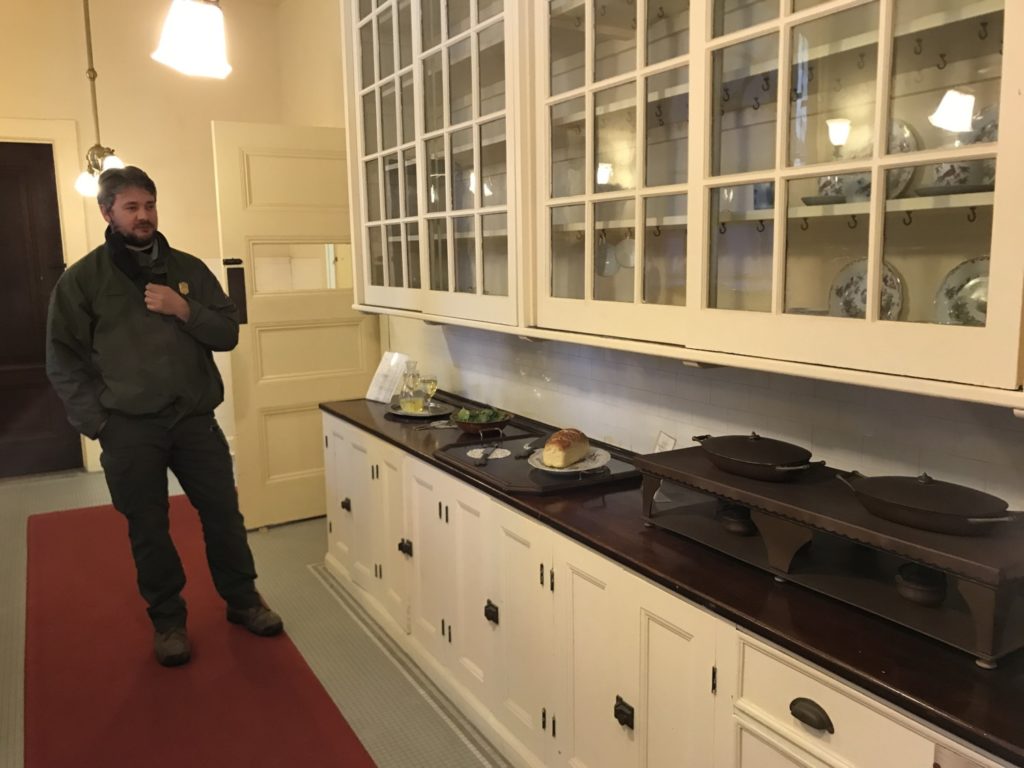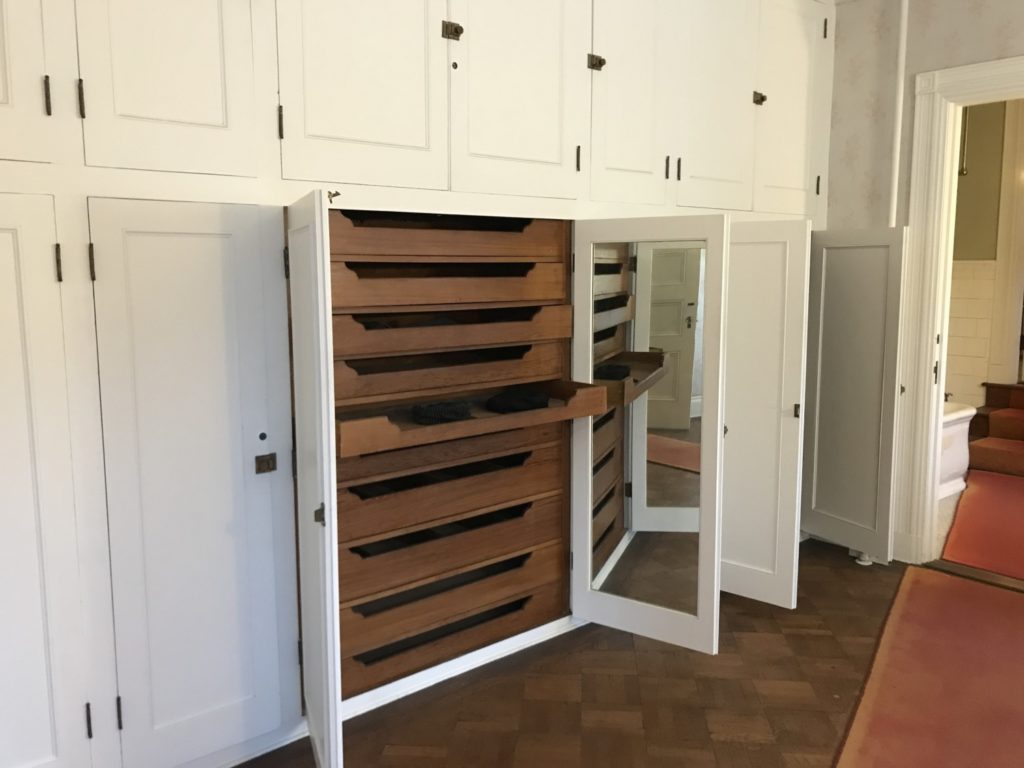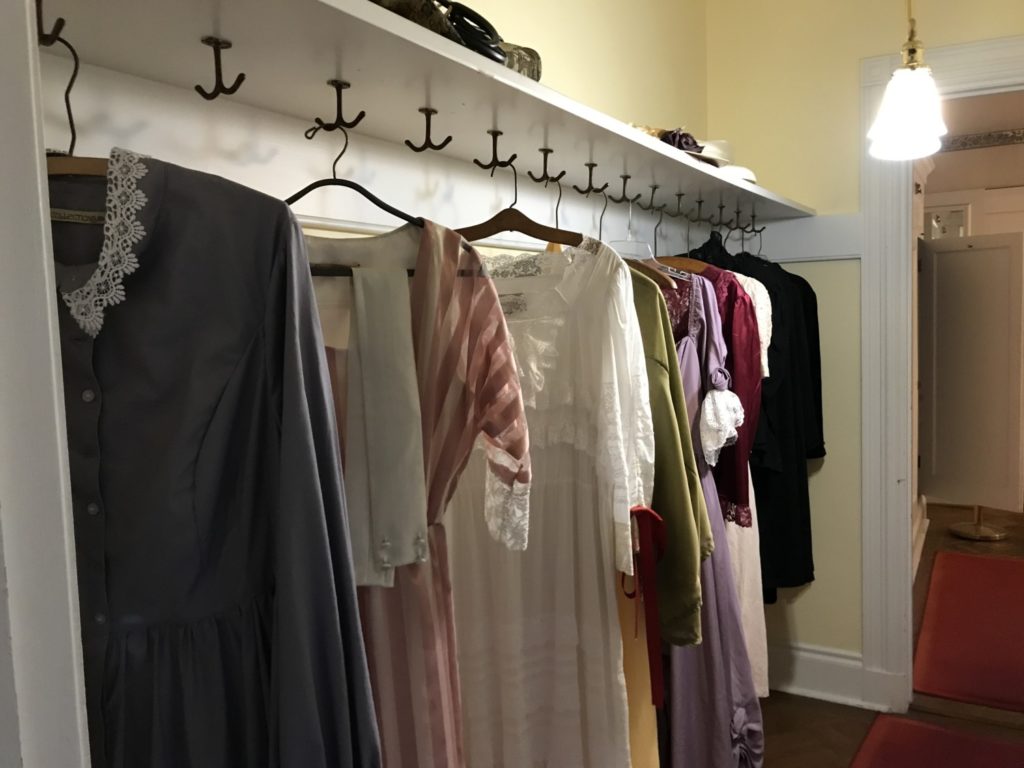As promised, I am writing today about the history of the Carnegies on Cumberland Island. They are responsible for the island being preserved and protected from development. The Carnegies donated the land for the National Seashore. They are also responsible for some of the problems with administering Cumberland Island National Seashore today. Much of the information in this blog post was taken from “Cumberland Island National Seashore” by Lary Dilsaver.
In case you have never heard of the Carnegies, they were a family that got rich from steel production in Pittsburgh. Andrew and Thomas were brothers from Scotland, with Andrew being the elder by eight years. Andrew is the one who became known for his philanthropy but Thomas had the better business mind and was more successful as a manager. Andrew was brash and always investing in the next big thing. Thomas did his homework and was more cautious in his investments. Consequently, Andrew constantly belittled Thomas’s skill as a manager, even as he made sure that Thomas was appointed to boards of Andrew’s companies.
The business success of Andrew and Thomas meant that Pittsburgh became an increasingly unhealthy city in which to live. Thomas and his wife, Lucy, were concerned about the quality of life for their nine children. Thomas was also an alcoholic, due to the difficult business relationships with his brother. Lucy and Thomas decided to retire from business and build a winter home where they could live healthier lives. In 1881 and 1882, they purchased 12,000 acres of Cumberland Island and built a 6,720 square foot mansion which was completed in 1885. The name of their estate, Dungeness, was held over from the name of the plantation that preceded it.
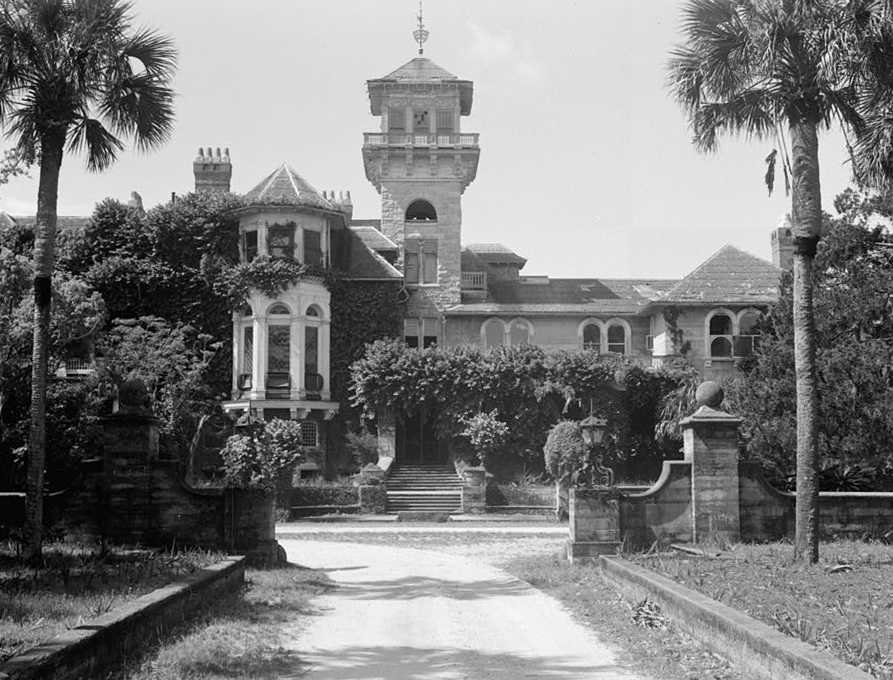
Unfortunately, Thomas did not get to spend much time at his beautiful new home. He died of pneumonia in Pittsburgh in October of 1886 when he was just 43. Thomas was originally buried in Pittsburgh, but Lucy later had him reinterred on Cumberland Island where the family still maintains the cemetery.
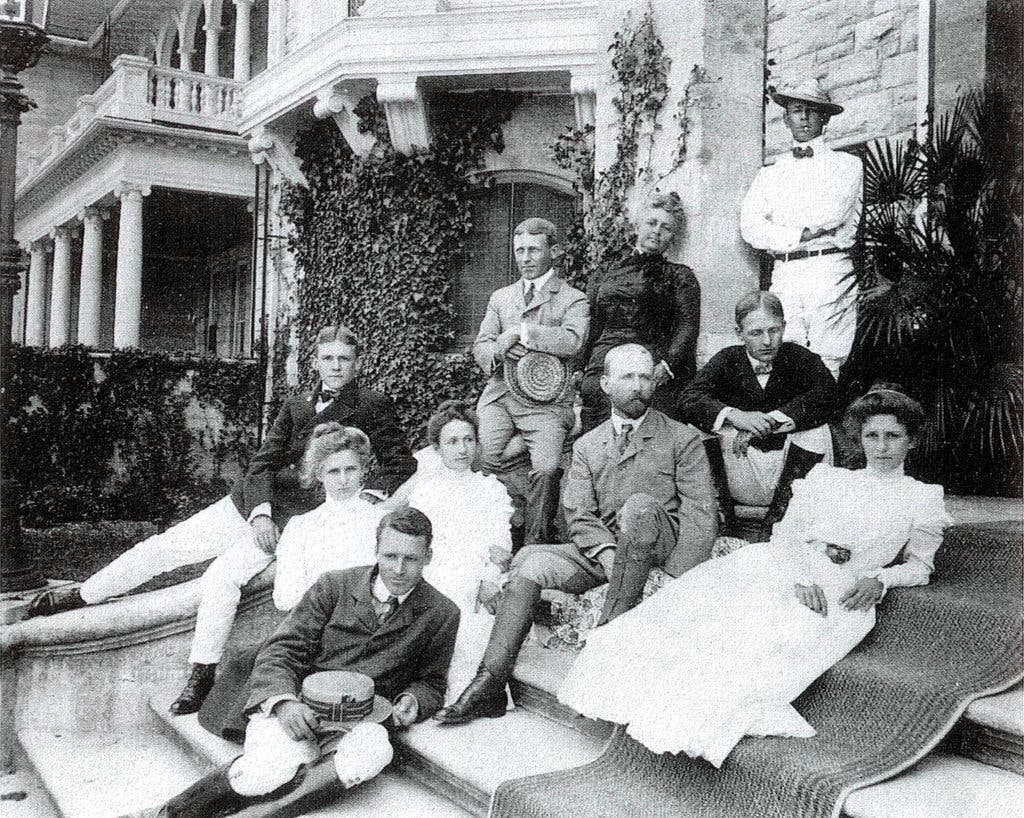
Andrew encouraged Lucy to sell Thomas’s shares of the business to him, but Lucy refused. She managed the shares herself and increased her family’s portion of the Carnegie wealth considerably. Lucy sold the home in Pittsburgh and lived most of the year on Cumberland Island. She continued to buy property until she owned 90% of Cumberland Island. She built four mansions for her children so they would continue to live close by. Lucy wanted the Dungeness estates to be self-sufficient, so eventually a village with 200 support staff sprang up around the estates.
William Carnegie, Lucy and Thomas’s oldest son, never married. He rebuilt the Stafford Mansion after the original burned down in 1900. Because William had no heirs, Stafford Mansion was passed down to one of his brother Andrew’s children. That family owns the home today. Another of Andrew’s children built a smaller house nearby called The Chimneys.
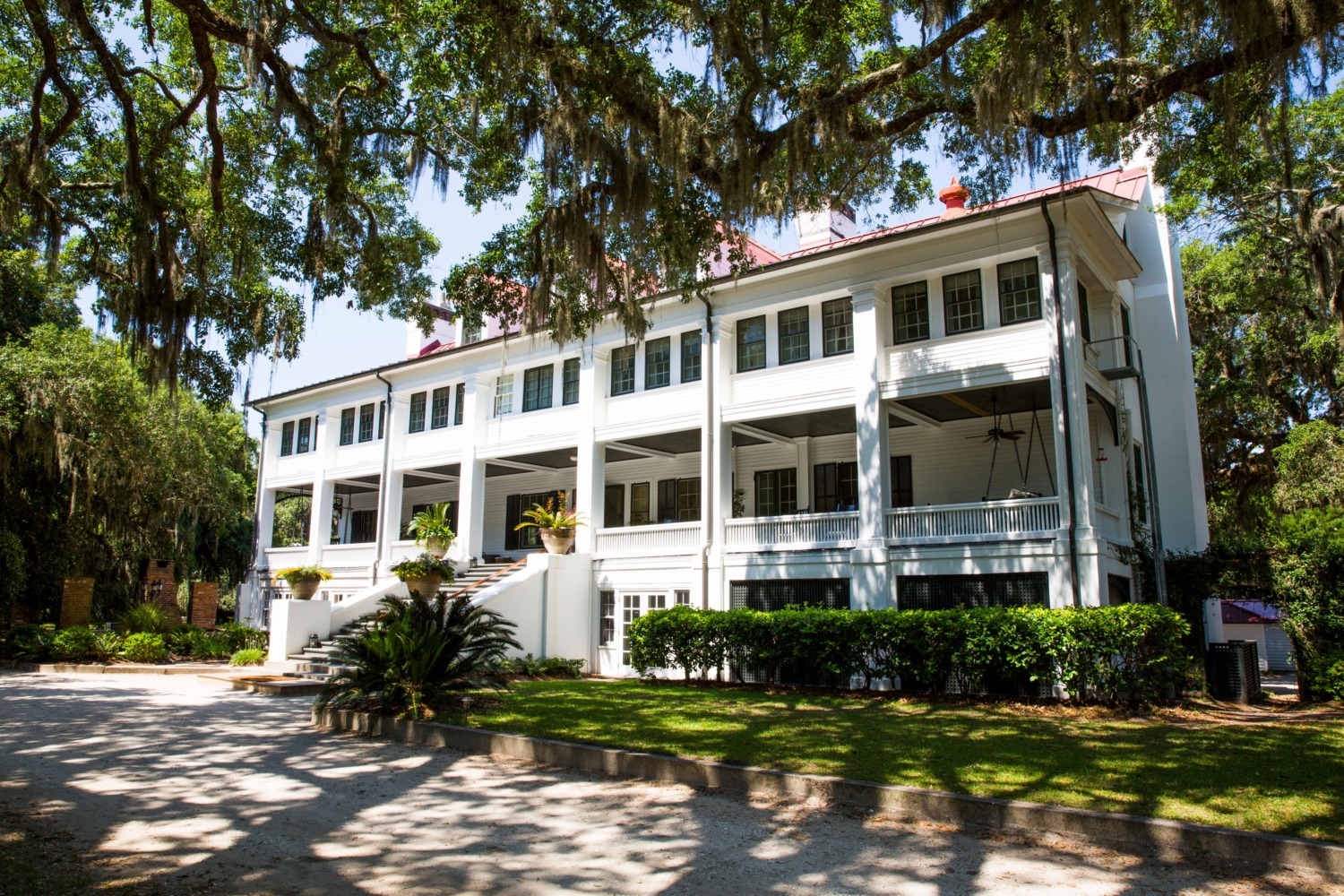
Margaret Carnegie and her husband, Oliver Ricketson, built Grayfield Manor. When Margaret died, her daughter Lucy inherited the mansion. Lucy’s heirs run Grayfield as a hotel, the only hotel on the island. Rooms average $750 per night. Several family homes are still owned privately on this piece of property.
Thomas Carnegie II built a 29 room mansion adjacent to Dungeness called The Cottage. His son, Thomas III, accidentally started a fire that burned the house down in the late 1940’s. The ruins of the house were bulldozed and a smaller house, with the same name, was built on the land.
The only mansion currently owned and operated by the park service is Plum Orchard at the north end of the island. This mansion was built by Lucy Carnegie when her son George married Margaret Thaw in 1898. Margaret added wings on to each side of the house, enlarging it significantly. When George died in 1921, his childless widow left the mansion behind. Nancy Carnegie moved into Plum Orchard after a failed marriage left her with four children. She soon married the family’s doctor, Marius Johnston, and she and her heirs lived in the house until 1970.
Lucy Carnegie died in 1916, but not before writing a will that left the land and her fortune in trust to her children and their descendants. Five of Lucy and Thomas Carnegie’s children had children. These five families became heirs to the Carnegie land and retained rights to the land even after it became a National Seashore. The five children became 16 grandchildren and great-grandchildren who all inherited a portion of the island.
Unlike their hard working father and uncle, none of Thomas and Lucy Carnegie’s six sons every held a job. Instead, they lived the recreational life of the very wealthy. Their mother, Lucy, was extremely controlling and she would exclude her children from their inheritance when they displeased her. Even after her death, she controlled the inheritance. In her trust, she established that the Carnegie building in Pittsburgh would be rented and the income used to provide upkeep for the homes on the island. The trust also stated that none of the land could be sold until her last child had died or unless all the heirs agreed unanimously to sell it.
Over the years following Lucy’s death, residual income from her fortune decreased while the cost of maintaining the island homes increased. The heirs proposed a number of ideas to make money from the island, but lack of unanimous agreement kept them from acting on any of them. Some logging, some farming, and some cattle ranching took place, but the income from these did not meet the expenses of the families. By 1960 there were only 13 employees on the island trying to keep up the maintenance of almost 100 homes and buildings. The buildings of the Dungeness estate were allowed to deteriorate unabated. In 1959 the Dungeness mansion burned down. A plan to strip-mine titanium on the island nearly succeeded but was eventually delayed by lawsuits until it was withdrawn.
In an effort to preserve the island’s natural beauty and retain their land rights, the heirs eventually agreed to sell the land to the National Park Service for the establishment of Cumberland Island National Seashore. The National Seashore was established in 1972 after nearly 20 years of talks and negotiations with various members of the Carnegie family. Several family members retained life leases, which allowed them to live in their home on the island for their lifetimes and the lives of their children. Today, 50 years later, only a small portion of these life leases remain, still held by family members. Greyfield Manor is one of the few areas on the island that remains completely in the control of the family.
The Carnegie family was important in the development and preservation of Cumberland Island. Thanks to them, we can enjoy this beautiful National Seashore today. But the park service continues to struggle with the maintenance of Plum Orchard and the Stafford estate. With the limited resources available, how much should be allocated to this relatively small parcel of land? Part of the establishing legislation for the island stipulated that only 300 visitors per day would be allowed on the island. This preserves the wilderness but is it cost effective? What kind of income could the park receive if it converted Plum Orchard into a hotel and had the establishing legislation changed to allow 500 or even 1,000 people per day?
All of these are questions to be answered by people at a higher pay grade than me. Isolated wilderness is beautiful and desirable, but it comes at a cost. I am glad that people like Ranger Michael are some of the ones who are considering options and will help to guide the park into the future.

